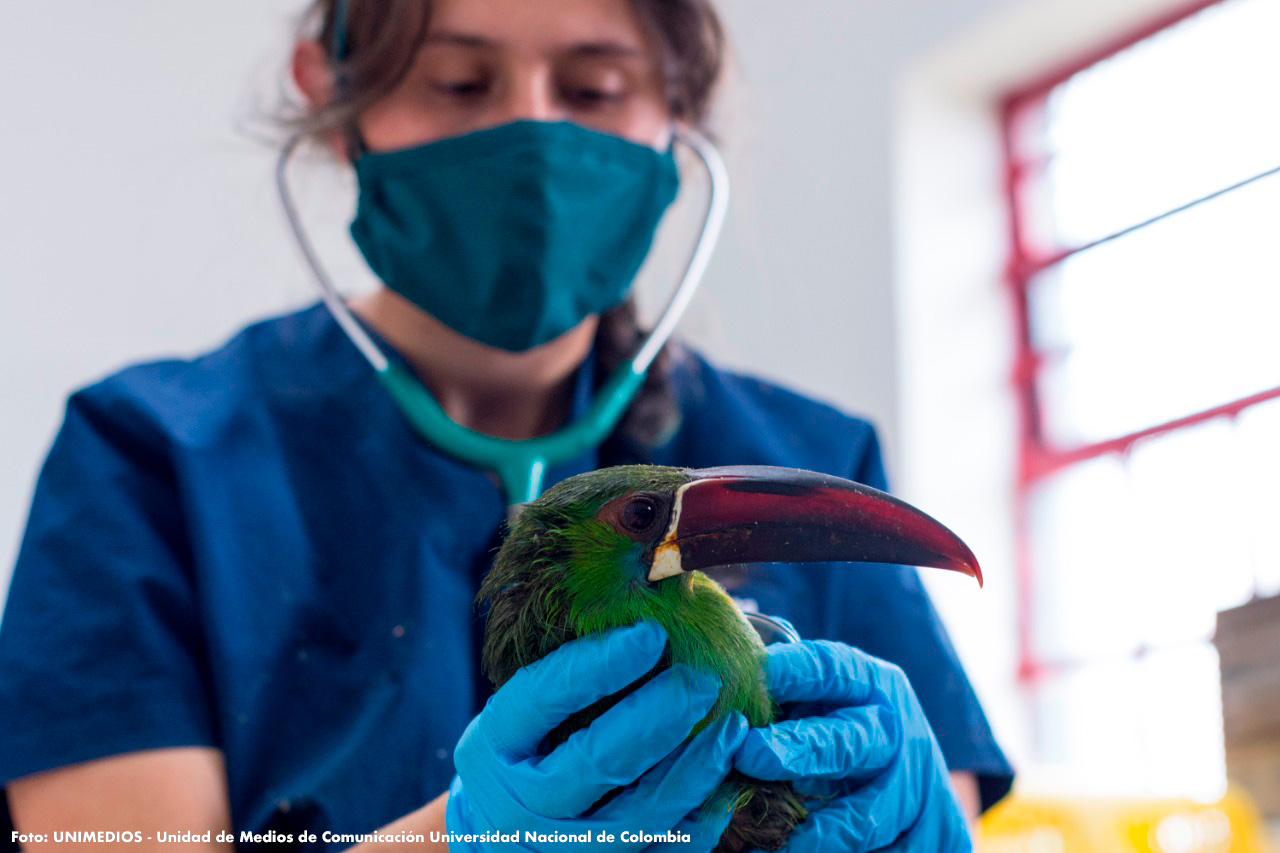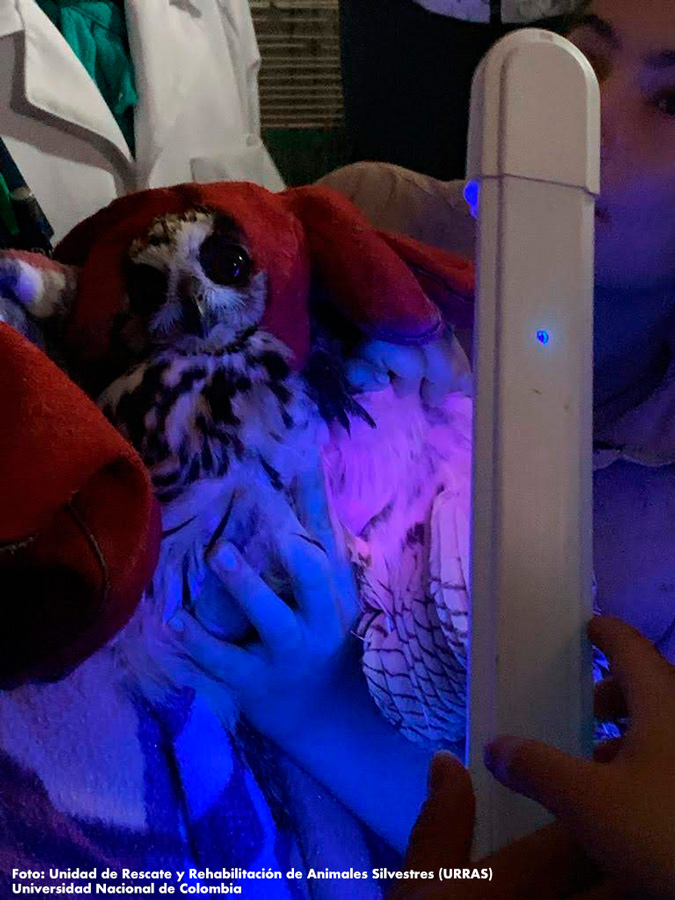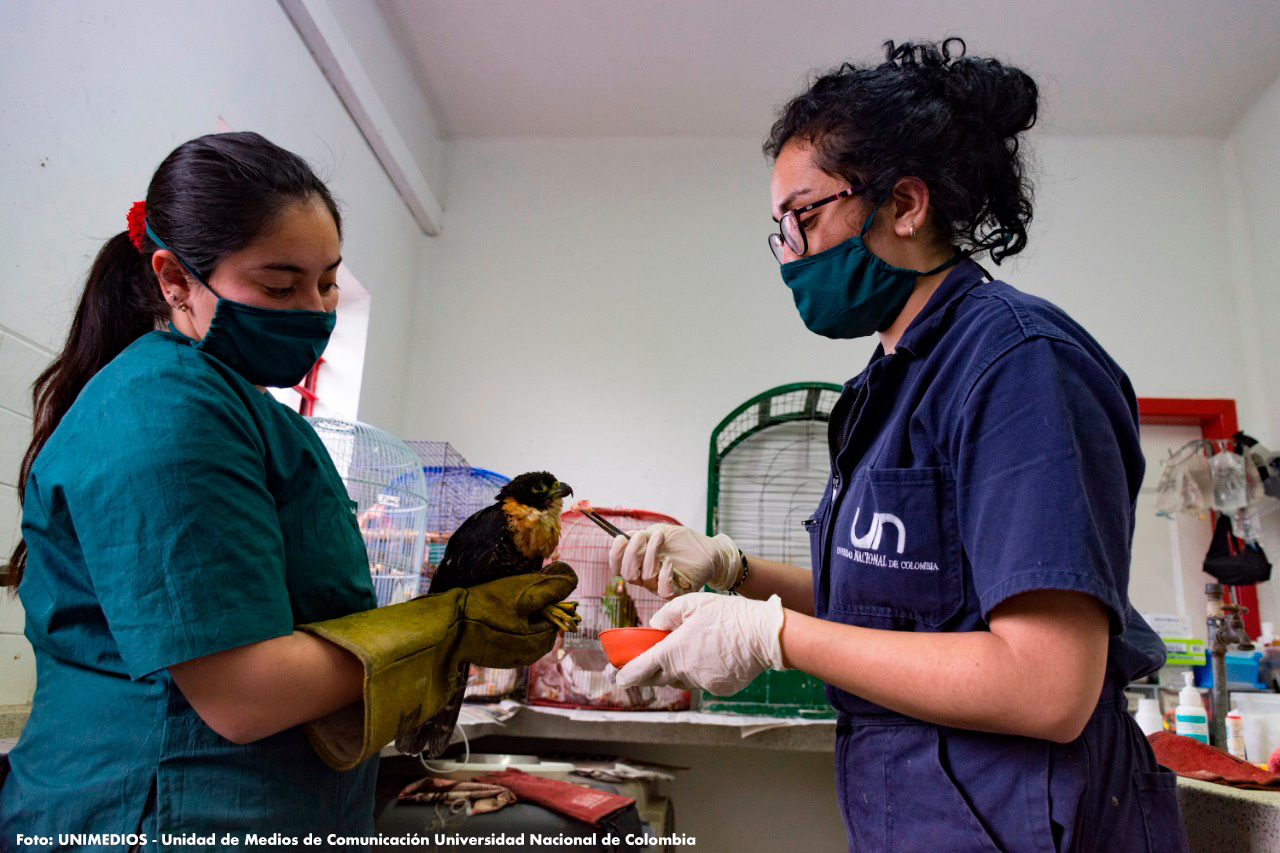Although illegal wildlife trade in Colombia originates mostly in rural zones, large cities are not detached from this problem. For example, Bogota is a key location from where species are shipped directly to foreign black markets; in that same city, wildlife is also traded for local destinations and uses. The Combatting Wildlife Trafficking Program managed by WCS stresses the importance of understanding the dynamics of illegal wildlife trade increasingly operated by organized criminal networks.

To get an idea of this issue, all it takes is stopping by the 20 de Julio market in Bogota. In the midst of the Covid-19 pandemic, after looking around for a few minutes, it is possible to find an offer of canaries from the Atlantic Coast. A pair of them can be bought for up to $26 USD. In another marketplace, in the Barrio Galan, parrots were sold for $20 to $25 USD a pair. The person who sold them claimed that these birds are usually captured near Cáqueza (Cundinamarca), a town located an hour and a half away from the city.
Authorities strive to exert control actions and prevent illegal commercialization of wildlife. Still, trafficking – as proved by the existence of an illegal black market which operates camouflaged under the distribution of staples– resembles a virus that slips through the cracks and is prevalent in different parts of the capital city.
Birds, turtles, frogs, among others, are concealed in the city as if they were part of a collection of individuals doomed to be auctioned.
"Without any doubt, our main cities, such as Bogota, function as springboards for wildlife trafficking, illegally casting our national biodiversity to foreign countries. Urban centers also function as arrival points in Colombia of exotic animals, that is, species from other latitudes. An example is the Mexican walking fish (Ambystoma mexicanum) now found in Bogota, a situation that potentially poses serious ecosystem risks", explains Biologist Andrés Balcázar. Mr. Balcázar is a professional expert representing the Combatting Wildlife Trafficking Program of WCS, an initiative aiming to divulge the dynamics and importance of illegal wildlife trade, which is now more and more handled by organized criminal networks.
In this environmental drama, Mr. Balcázar explains that the Colombian capital has two roles: one of them is to provide function as a trading center for local buyers, who buy animals primarily as pets. "This is not new, but it is an activity that has been increasing," he adds. He also explains that this type of trade has mutated and has gone from being formerly ostentatious to currently functioning as a very low-profile activity. Until a few years ago, monkeys or exotic birds could easily be found in these same market places. Large mammals, such as ocelots and jaguars, could also be ordered by catalog. Currently, this type of trade is more concealed.
Carolina Urrutia, District Secretary of the Environmental Authority in Bogota, informs that her administration is leading a revolution to curb this illegal commerce, preventing wild animals from being sold in markets and outdoors.
"In many parts of the city, such as in the El Restrepo market, this activity is not allowed anymore. In city markets, we had a 'grey area' concerning this issue, especially about policing activities. Yet, we have already reached an agreement among authorities, including the District Institute of Animal Protection and Welfare, and the Secretariats of Economic Development and Government", adds Urrutia.
However, the illicit commercialization of animals for their destination as pets is a frequent phenomenon. This is one of the important challenges faced by city authorities because there is a lack of awareness from society.
Urrutia, who indicates that the District Environmental Secretariat has rescued only this year 2,600 wild animals, explains: "This is why we must strengthen our communication and education efforts so that people understand that wildlife species should be left in their habitat."
Bogota's second role in trafficking: we will now examine Bogota's second role, as a reception zone for animal species and a link for their shipment abroad. City streets become a transit site for species on their way to overseas markets.
An example of this happened in 2019 at the El Dorado Airport in Bogota, when authorities confiscated 424 poisonous frogs (Oophaga lehmanni and Oophaga histriónica), the latter one called harlequin due to the unique combination of colors on its body. The frogs were being transported illegally in photographic roll film containers. Their final destination was Europe, with a stopover in Brazil. In 2018, another shipment of 216 venomous frogs was discovered. Various frogs, including specimens of Oophaga histriónica, Oophaga lehmanni and the Pichincha poison frog (Oophaga sylvatica) were to be transported concealed in the same manner. Traffickers planned to introduce the shipment to Europe or Asia to be illicitly traded or even "legally" sold in trade fairs.

There is an agency that can act as a thermometer for this environmental problem and where, in a certain way, impacts can be measured. This agency is the Wildlife Rescue and Rehabilitation Unit (URRAS) of the Faculty of Veterinary Medicine of the Colombian National University. An average of 250 wild species arrives annually at this facility; 20% originate from seizure operations (birds, mammals and reptiles) by authorities. The rest of the figures correspond to general animal rescues. Of these 250 individuals, only 30% return to their habitat and another 30% perish due to their captivity's negative side effects.
Carlos Alfonso Moreno, veterinarian, professor at the Colombian National University and URRAS coordinator, considers that illegal wildlife trade is a very complex problem that is unlikely to decrease. "It is easy to deduce that it is growing when, for example, we see parrots and other hot climate animals abandoned in city's parks and wetlands," he explains.
Balcázar adds an important comment: police action is not enough. It is fundamental to raise collective awareness on this issue. "The day when people understand the environmental damage caused when an animal is bought from a trafficker, to keep it at home as a pet, maybe we can start to curb part of this crime," he concludes.
